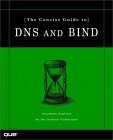The bindrndc Error: connect failed: 127.0.0.1#953 is stating the utility of the "rndc" supplied as component in the BIND9 is falling short in attaching a connection linkup to the essential socket on the local hosts network. On performing a script run with the /etc/inid.d/bind9, you may see that not every one of its procedures will all ways course the invoking of the bind RNDC.
The /etc/named.conf and /etc/rndc.conf must be the same as each other.
Rndc is very helpful in seeing the Name Server's Cache data to find possible Problem for
BIND 9 apply the rndc dumpdb and for
BIND 8 apply the ndc dumpdb
Here is some Key to put on your key ring or enter in to your ZX spectrum its up to you.
Remove Existing Key File = remove the rndc file
Standard install = rm -f /etc/bind/rndc.key
chroot install = rm -f /var/lib/named/etc/bind/rndc.key
chroot install = vi /var/lib/named/etc/bind/named.conf
Remove rndc key specification /etc/bind/named.conf file on a normal install = vi /etc/bind/named.conf
make a new key file rndc-confgen = rndc-confgen -r /dev/urandom –a
adding a reference to the new key with named.conf file = vi /etc/bind/named.conf
producind a fresh rndc.conf file = vi /etc/bind/rndc.conf -k dnsadmin -b 256
-k option is of setting the essential name of the key produced by rndc-confgen reset it to a dissimilar value from its standard default naming of the bind rndc-key. I highly recommended a modification to the key name.
-b is option sets the key size 1 to 512 bits. Default 128 bits for a public DNS server 256 or more is best practice
options {
default-server localhost;
default-key "rndc-key";
};
server localhost {
key rndc_key;
};
key rndc_key {
algorithm hmac-md5;
secret "xxxxxxx==";
};
include "/etc/bind/rndc.key";
how to stop Bind = /etc/init.d/bind9 stop
how to start Bind = /etc/init.d/bind9 start
to closed all named connections = netstat –tap
BIND 9.2.0 and newer name server can flush the cache but oldies have
to kill all named connections = killall named
to flush cache BIND 9.2.0 = # rndc flush internal
to flush cache BIND 9.3.0 on attached records at any particular domain= # rndc flushname somesite_eg_whatever_.com
to Verify Search name syntax rndc-key = vi ./rndc.conf
to find verify name syntax rndc-key = vi/etc/named.conf
Update permissions in the rndc.key = chown root.bind ./rndc.key
chmod 755 ./rndc.key
named.conf permissions = chown bind.bind ./named.conf
chmod 755 ./named.conf
Modifying Zone Data in BIND 9 = # rndc reload domain-name-of-zone
Modifying Zone Data in BIND 8 run = # ndc reload domain-name-of-zone
Modifying multiple zones = # rndc reload foo.eg bar.eg
















No comments:
Post a Comment